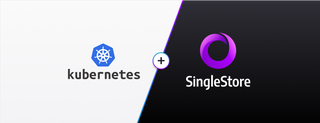
It’s no secret MySQL is one of the most popular open-source databases available on the market, with companies like Airbnb, Pinterest and Netflix using it in their tech stacks.
Additionally, JSON is a widely used, lightweight format for storing and transporting data in MySQL. Businesses at the start of their real-time application and analytics journey often turn to MySQL for its ease of use and familiarity.
But as a single-node architecture with limited scalability, MySQL users eventually hit a stall when handling real-time analytics on rapidly changing data — which often results in companies adding more databases into their tech stack, tacking on added complexities and costs.
But, what if there is a way to turbocharge your applications and analytics in MySQL, while still retaining the familiar syntax and structures of SQL and JSON?
In our webinar, “Turbocharging MySQL JSON Data with SingleStoreDB, Senior Technical Evangelist Akmal Chaudhri builds an example inventory system using SingleStoreDB, dives into the benefits and challenges of MySQL architectures and demonstrates how to store, retrieve and query JSON data using SingleStoreDB.
Here’s a quick recap of what else we cover in the webinar.
How Does SingleStoreDB Work for MySQL Users?
“SingleStoreDB has the MySQL compatibility, “ shares Chaudhri. “It uses the MySQL wire protocol — so if you’re familiar with MySQL or MariaDB, for example, various drivers and tools will work out of the box.”
Given its familiar SQL syntax, SingleStoreDB makes it incredibly easy to migrate from any flavor of MySQL, including AWS RDS, Google Cloud SQL, Azure MySQL and others. Developers who’ve hit a stall in their ability to scale their MySQL data architecture aren’t tasked with learning a completely new technology — or undertaking a massive migration project.
In addition to its SQL compatibility, SingleStoreDB also includes features that empower uses to load data at faster speeds than standard, single-node databases.
“SingleStore has this capability called Pipelines, a very useful feature that allows you to ingest data at scale in parallel,” explains Chaudhri. “That could be residing, for example, in a S3 bucket; it might come from a Kafka cluster.”
You can see more on how Pipelines work in our webinar, Introduction to SingleStoreDB — also hosted by Chaudhri.
JSON Support on SingleStoreDB
“With the JSON support that SingleStoreDB provides, there’s about 15-plus functions,” says Chaudhri.
These functions include (but aren’t limited to):
- Build
- Extract
- Delete
- Display
You can get a full view of functions supported in SingeStoreDB in our JSON Functions documentation. As Chaudri goes on to explain, moving JSON data into SingleStoreDB is a simple, straightforward process — and can be done in one of three recommended ways:
- MySQL CLI using LOAD DATA. Using this method, you can specify the format of the data that you’re reading in. This function currently supports JSON, Avro and CSV data types.
- SingleStoreDB Pipeline. As mentioned earlier, using Pipelines is particularly useful if you’re looking to ingest large quantities of data, and you want to do it in real time. This function currently supports JSON, AVRO, Parquet and CSV data types.
- SingleStoreDB Portal UI. This option is currently supported for S3 and available for all three major clouds — AWS, Google (GCP) and Microsoft Azure. While Chaudri demonstrates this method later in the webinar, you can read more about how to load CSV/JSON Files into SingleStoreDB with the portal UI from software engineer Marta Vasconcelos.
Ready to Turbocharge Your MySQL JSON Data? Watch the Webinar On Demand
Get a front-row view on our hypothetical inventory system built on MySQL using JSON data — and how effortless it is to store, retrieve and query that data using SingleStoreDB.
Watch “Turbocharging MySQL JSON Data With SingleStoreDB” on demand today.
-for-SingleStore-Cloud_new-primary_(1).png?auto=webp&width=320&disable=upscale)




